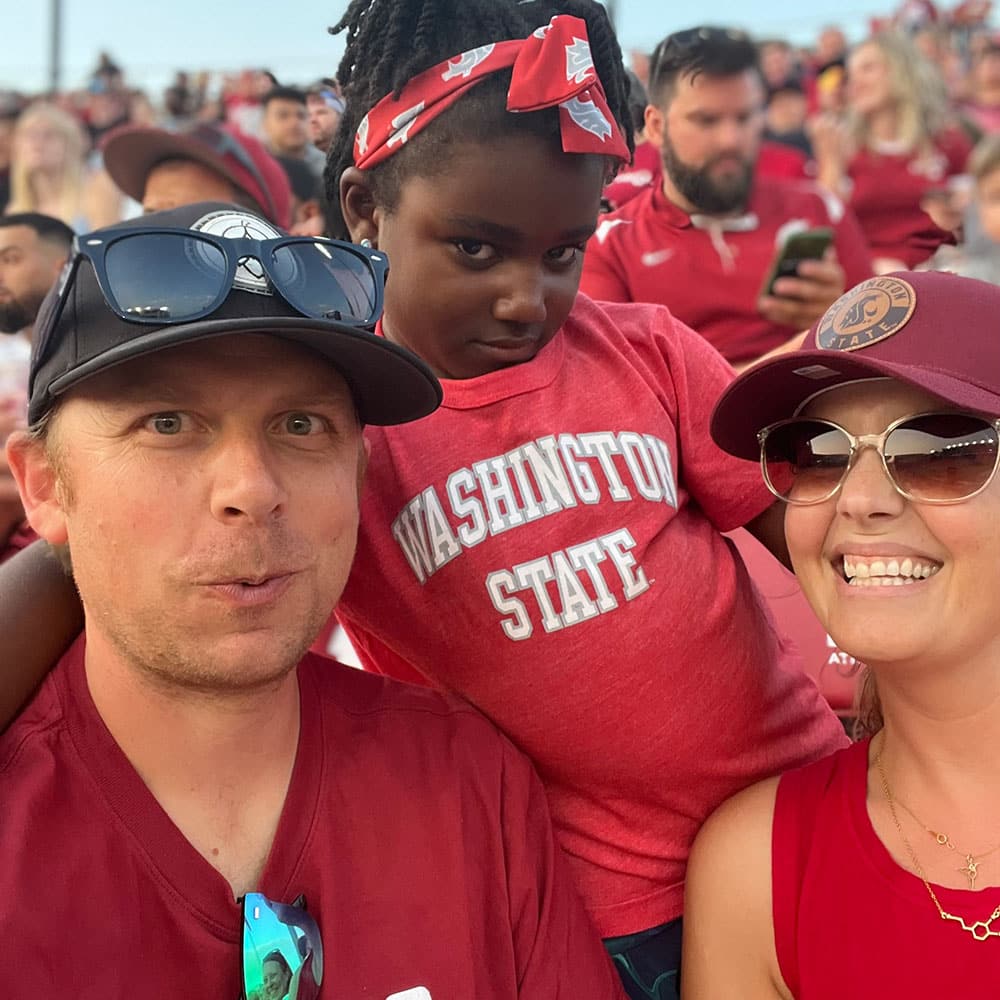Rita’s Story
Rita and her husband James have three children. Rita sometimes works part-time, but spends most of her time as a great Mom. James, on the other hand, does full-time public service work. As a household, they have always done all they could to keep their kids busy with academics and sports. And last fall, the family did some strategic shifting of their assets to optimize their Free Application for Federal Student Aid (FAFSA).
Simultaneously, Rita’s parents have been diligently saving into 529 accounts for years; possibly enough for all three kids to leave college without any debt. With one daughter in college, and two others set to enroll in a couple years, Rita and James, plus the grandparents are all working together to weigh their options.
The daughter in college is a stellar academic and athlete, and is currently receiving several scholarships, but there is still a balance to pay each semester. And what scholarships the younger kids will receive is still unknown. Additionally, Rita’s parents are willing to keep chipping in to help fund their grandchildren’s educations.
There’s about $37,000 in each of the children’s 529 accounts. But Rita’s still wondering if it may make sense to take out loans. Additionally, she wants to know the best course of action in using the scholarship money, 529 funds, and grandparental contributions. So she reaches out to Crafted Finance for help.
Crafted Finance’s Solution
The American Opportunity Tax Credit
One of the factors in this situation is taxes. And if Rita’s parents continue gifting while the kids are in school, Rita and James’s income makes them eligible for the American Opportunity Tax Credit (AOTC). As long as their AGI is less than $185,000 a year, and $4,000 is given from non-529 sources, they will receive a $2,500 non-refundable tax credit.
However, the AOTC can only be claimed for one student each year. So they’ll have to keep this in mind once Rita and James have all three children enrolled in college. But until then, this “spend $4,000 get back $2,500” can be put solely towards the eldest daughter.
So one idea is for the grandparents to gift Rita $4,000 that she can pay towards the invoice. Then, Rita and James can claim the tax credit and get $2,500 of value on their tax return.
529 Account Distributions
As far as the 529 accounts go, things are a bit more complicated. The grandparents have been putting away savings into different types of 529 accounts. One is a Scholarshare 529 account, and the other is Washington State’s Guaranteed Education Tuition (GET) 529 account.
The GET has a rate of return that’s guaranteed to keep pace with increases in college tuition costs. However, the Scholarshare 529 account makes no such promise. For this reason, they may want to consider using the funds from the Scholarshare 529 account first. This is the more certain approach as there’s no guarantee that the Scholarshare account will recover in performance by the time the eldest daughter completes college.
However, using the GET funds first could work out in their favor too. By using the GET funds first, they give their Scholarshare account time to recover its returns. Still, it’s entirely uncertain that this will happen.
The timing of withdrawals from a grandparent 529 account can also harm financial aid eligibility. That’s because grandparent 529 withdrawals are considered student income when filling out the FAFSA. That said, the #1 rule of grandparent gifts for education is TAKE IT AND SAY THANK YOU! But in this case, we are trying our best to delay taking withdrawals from the 529 plans as long as possible if they can’t cover 100% of all the costs after scholarships.
Regardless of which option is exercised, Rita and James are reminded that any left over money in the 529 account for their eldest daughter can be used for her graduate education, or put towards bachelor’s degrees for their two other children.
Subsidized Loans
Rita is smart to be wary about taking out unnecessary loans. The payback of student loans has become an enormous burden on many, and they cannot be defaulted on. That being said, there may still be a good reason to take out a loan in Rita and James’s case.
The eldest daughter may want to consider taking out a subsidized loan in the amount of the $1,456 they’re eligible for. In fact, they may want to do this every semester it’s offered. That’s because these loans don’t accrue interest and don’t require repayment for a few months until their eldest daughter is no longer enrolled at least half-time in post secondary education.
Using the loans to fund college would give the funds in their GET and Scholarshare 529 accounts more time to grow. And the money earned in these accounts could then be used to pay back the loans. Additionally, if there’s money left over, the 529 funds could also be put towards their other childrens’ educations.
Scholarships
It’s wonderful that Rita and James’s eldest daughter is receiving scholarships. And they should enjoy the full perks of that achievement together. But banking on consistent scholarship money needs to be taken into account. In the first year, the eldest daughter received several community based scholarship awards, but will not receive them in years 2-4.
If for whatever reason the scholarship money no longer continues, Rita and James will need to be prepared to take a proactive approach in changing up their college-funding strategy. A saving grace is that in just two years, the other two kids will be entering college too. This means their eligibility for financial aid will be enhanced because the FAFSA strongly benefits families with multiple kids in college at the same time.
Conclusion
After discussing strategy from multiple angles, Rita and James feel more confident about funding their childrens’ higher learning. They’ve been exposed to a variety of options and how they can take advantage of the 529 funds, grandparental contributions, and loans at their disposal.
If you’re looking for someone to have in your corner as you navigate the complex and expensive world of funding college education(s), we’re here for you. Please feel free to reach out to us at (650) 336-0598, or schedule a complimentary consultation.













